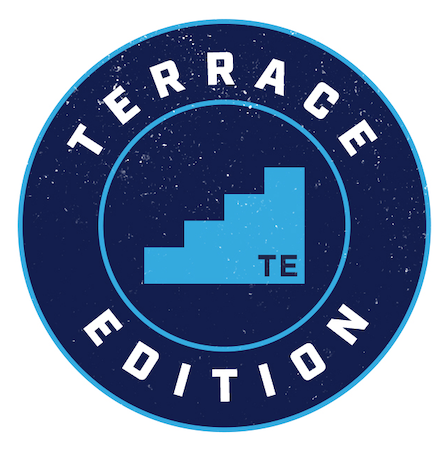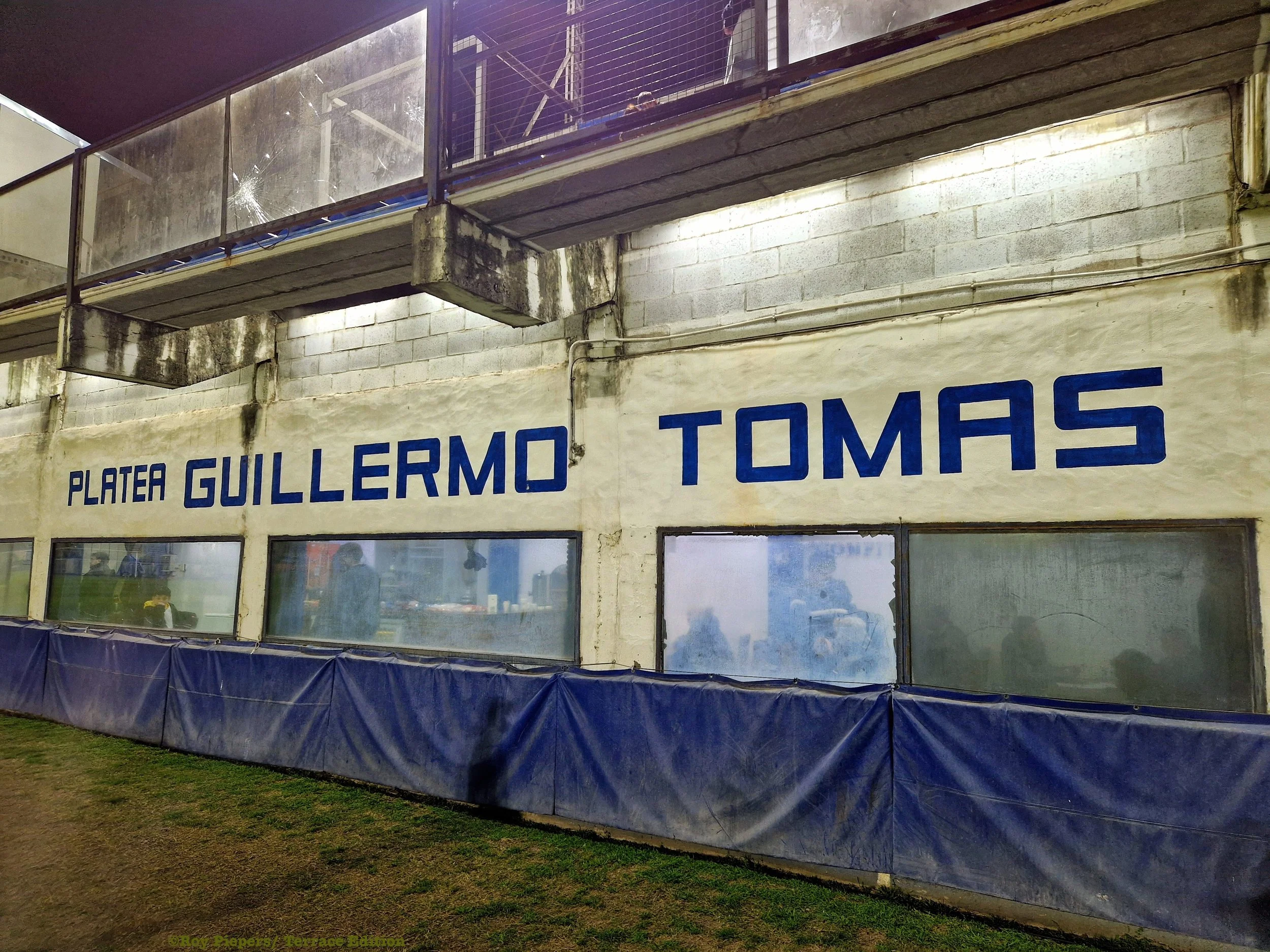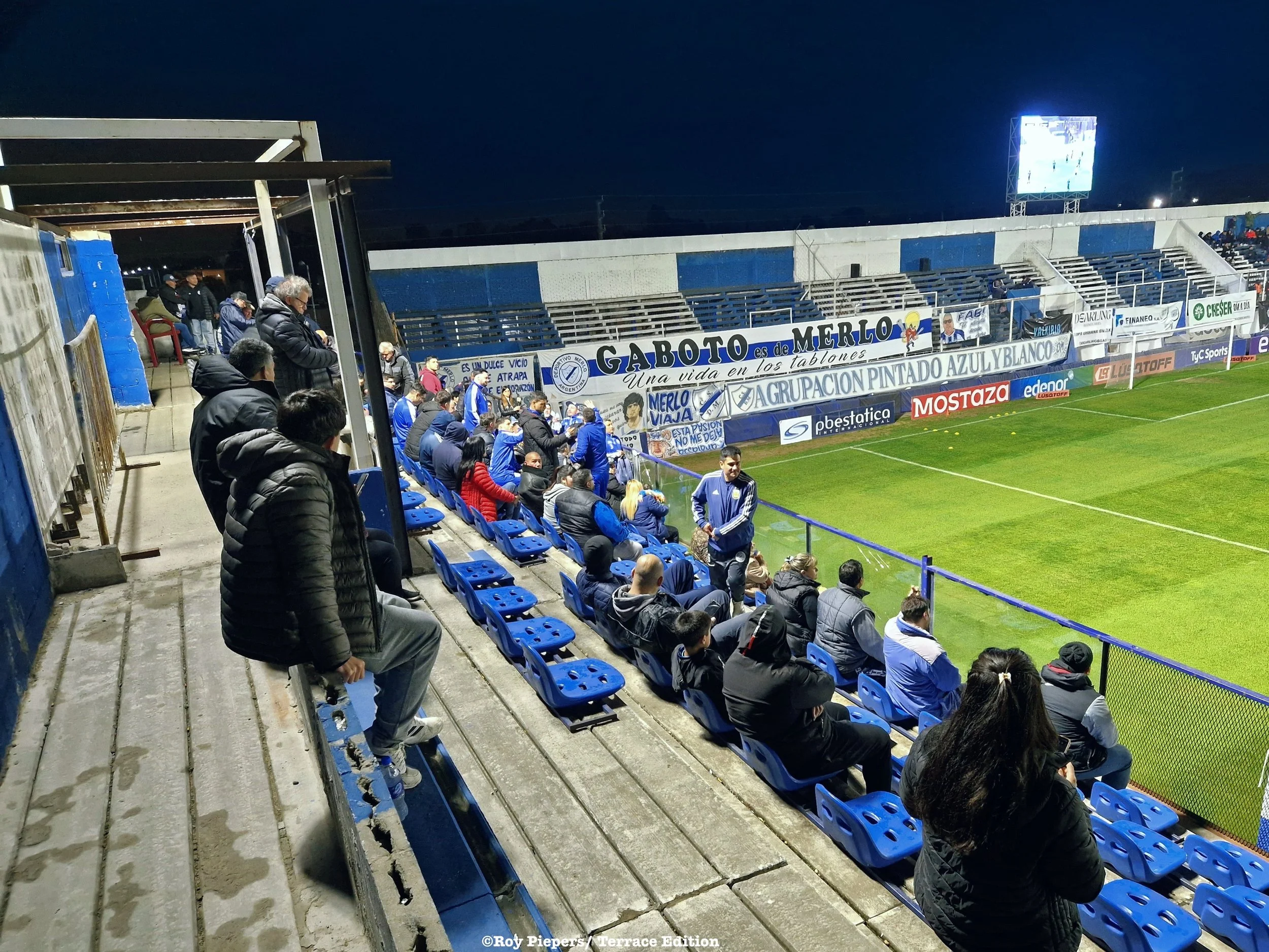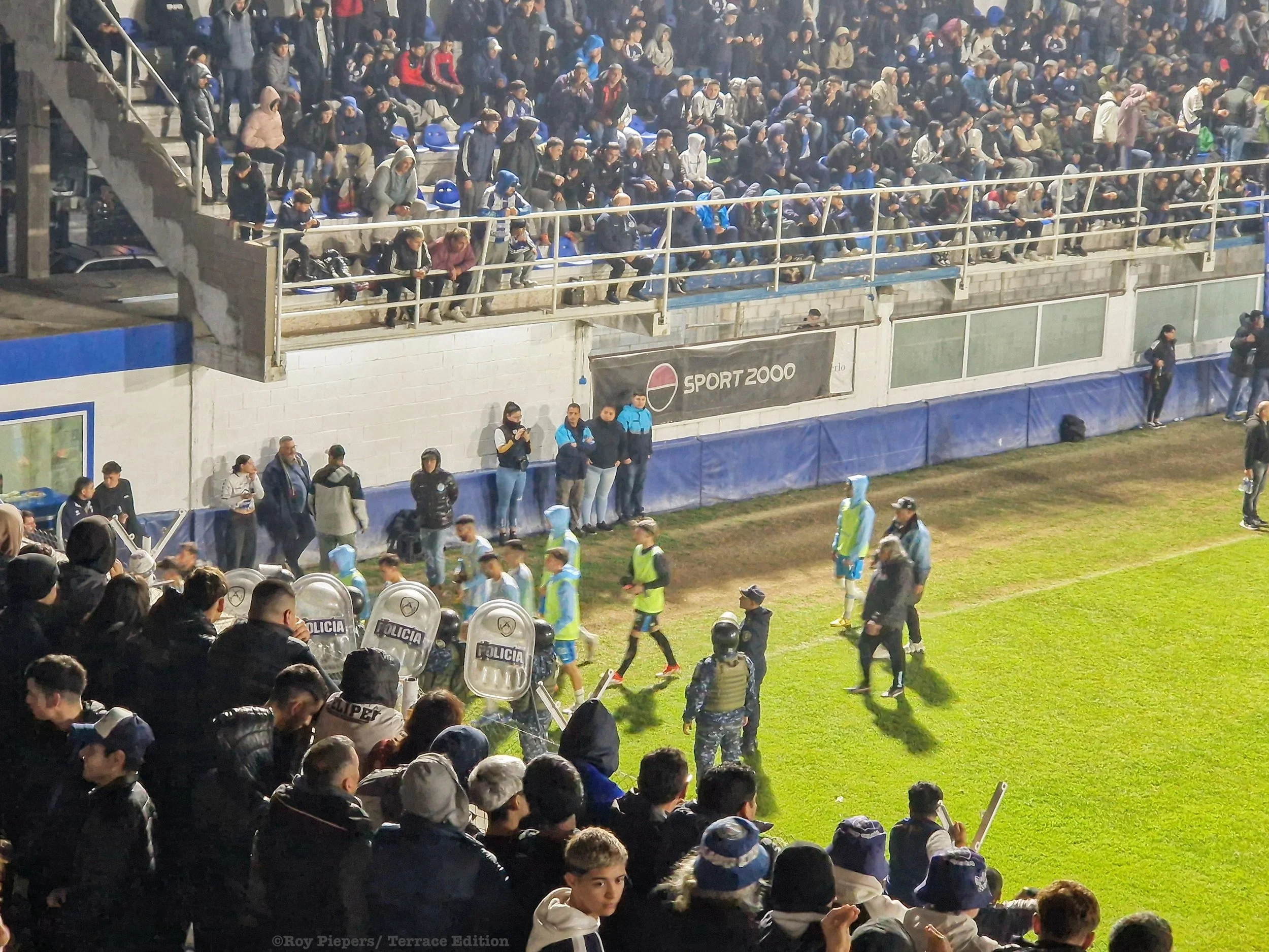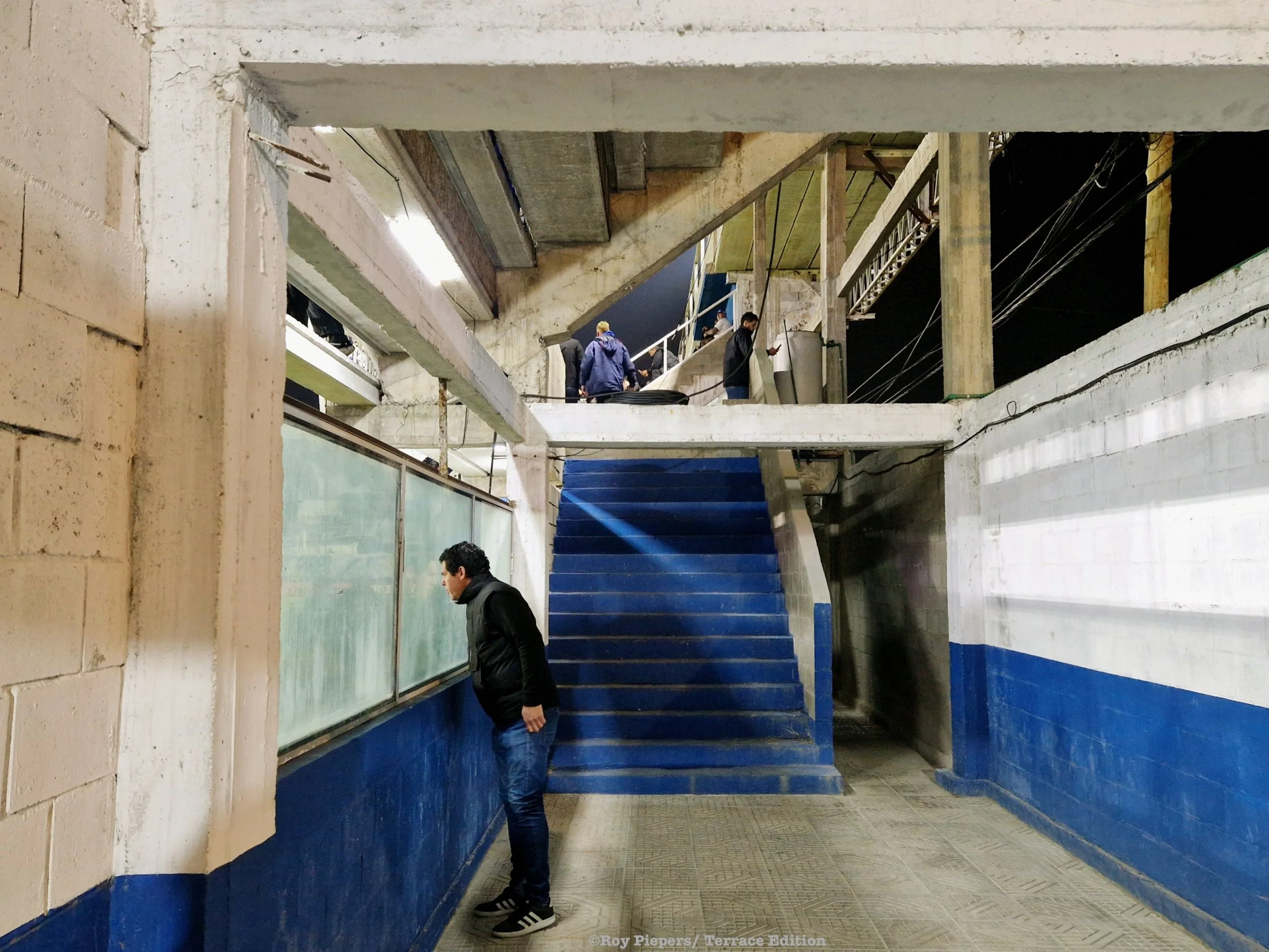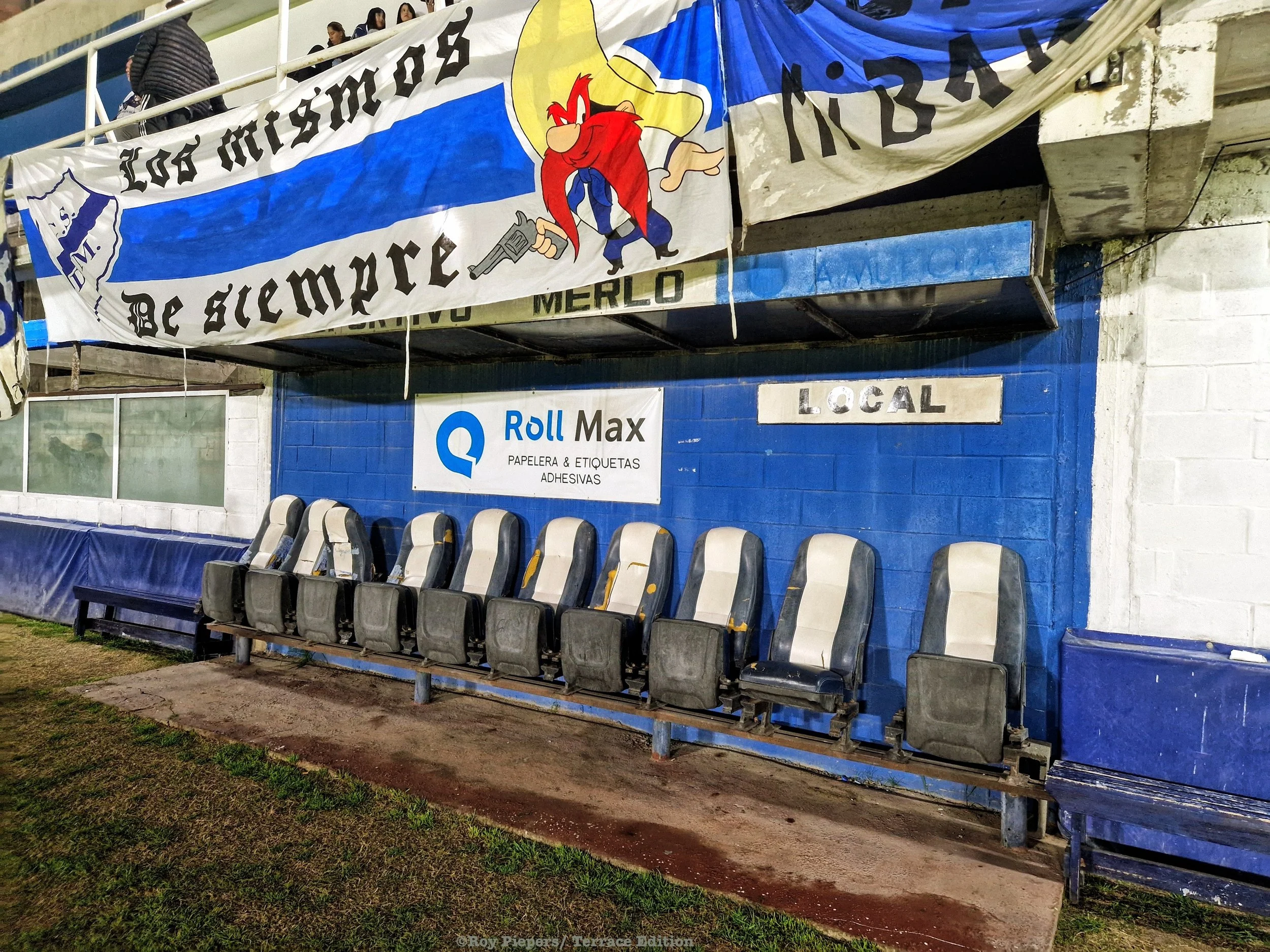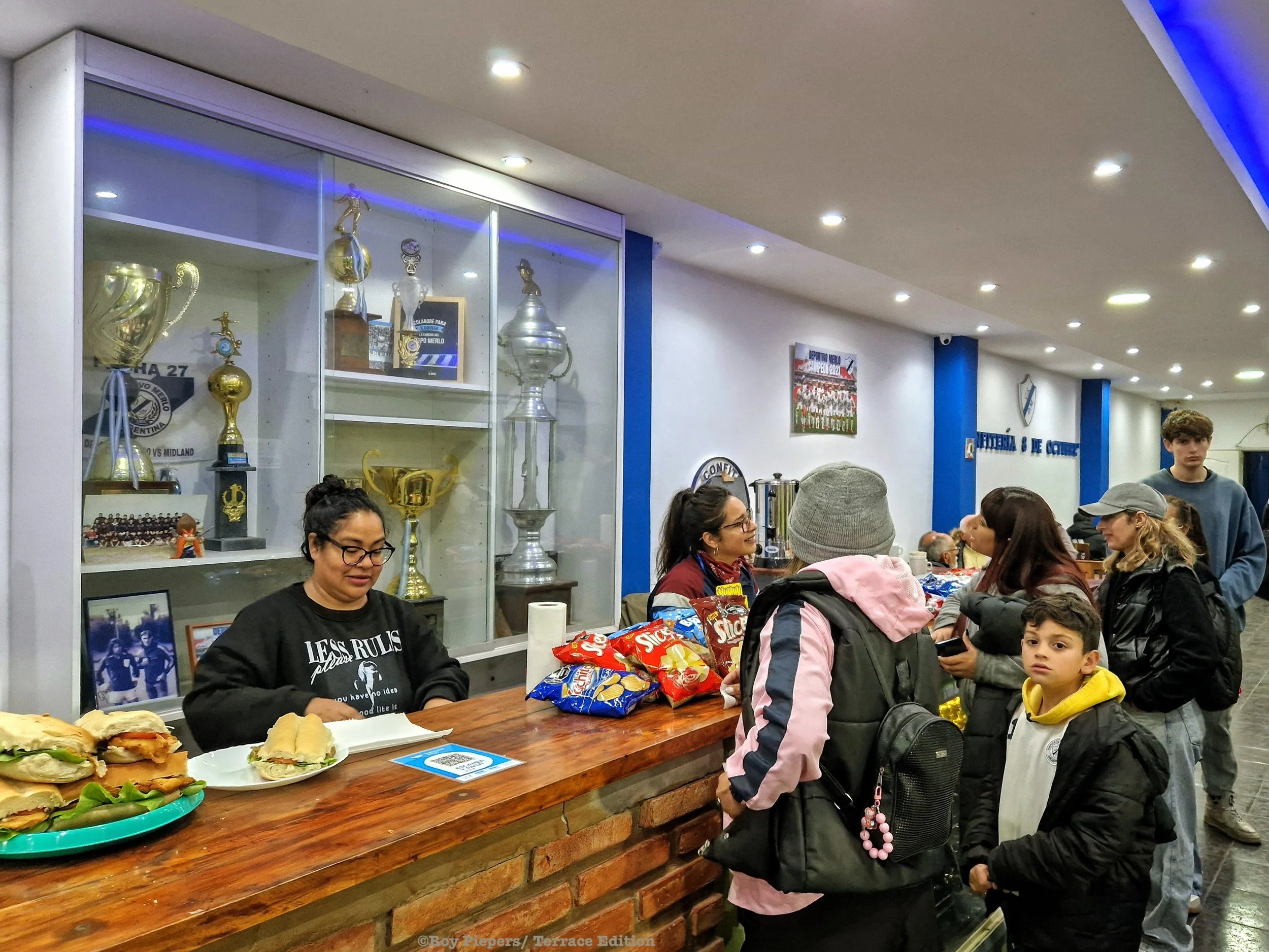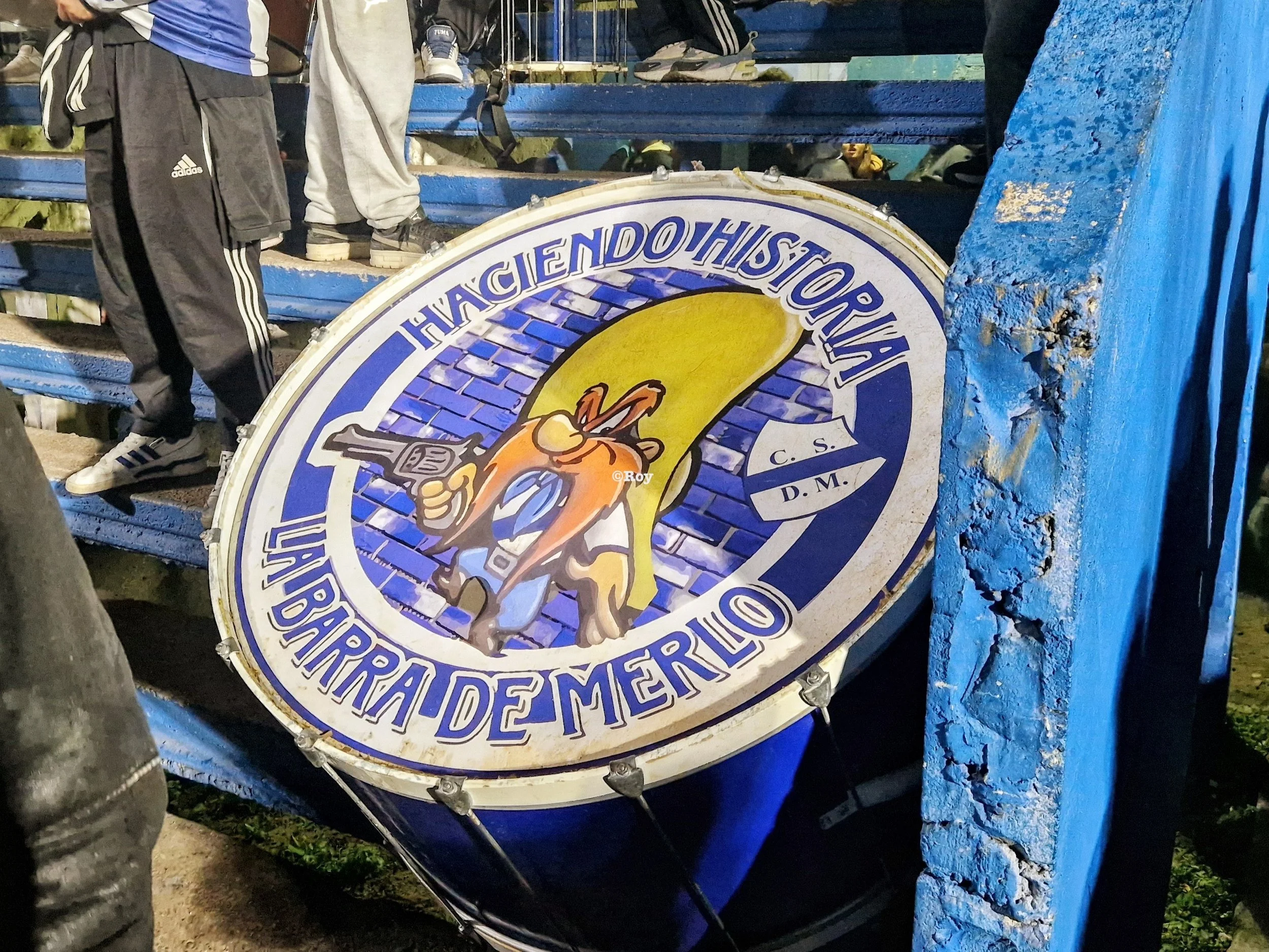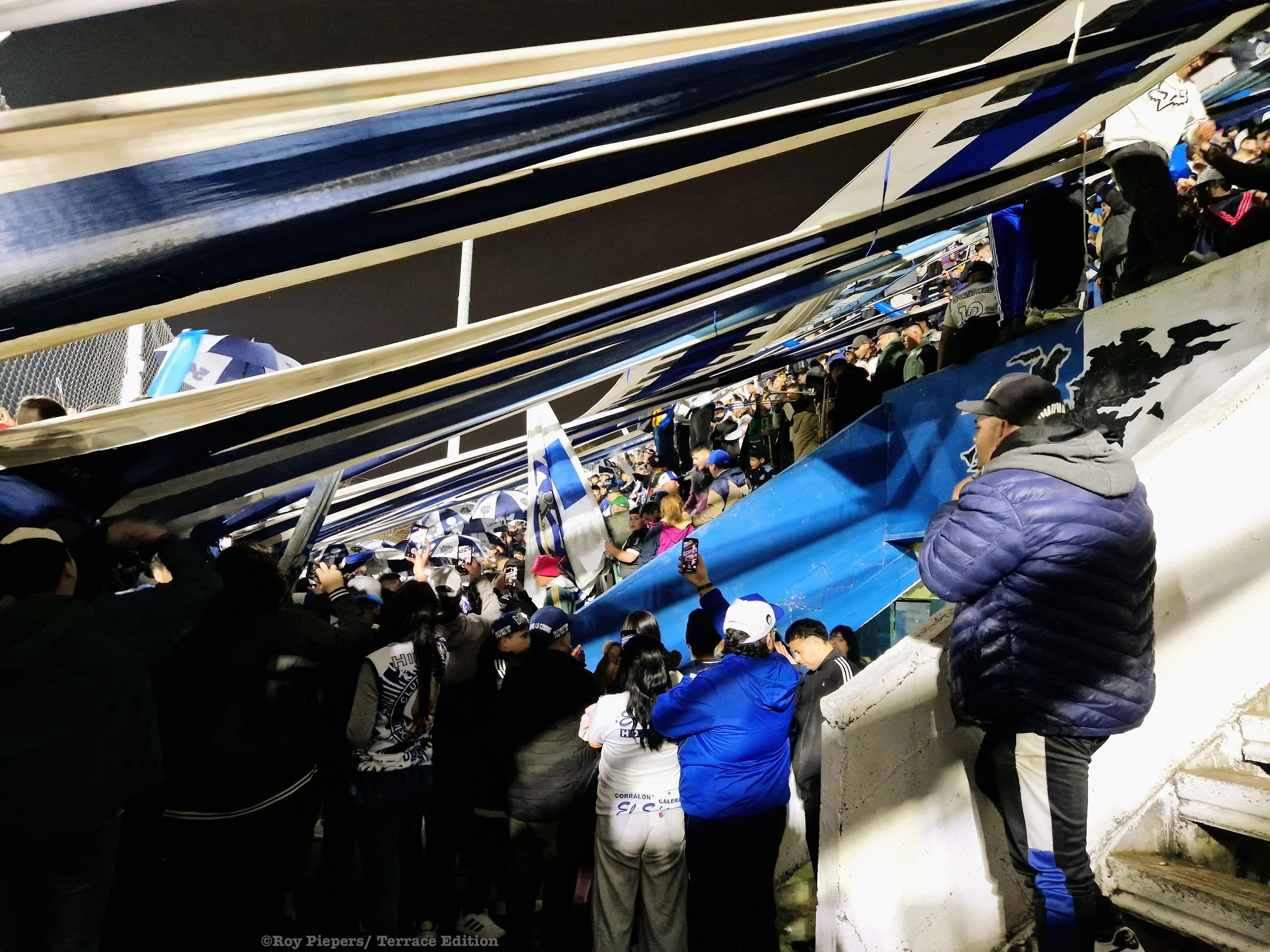Clásico de Merlo

Words: Roy Piepers
Images: Roy Piepers
Argentina’s great clásicos—the Superclásico, the Avellaneda derby, the battles of Rosario—are celebrated worldwide for their colour and chaos.
But in the quiet streets of Merlo, far from the tourist trails, a different kind of fever takes hold when Deportivo Merlo meet Argentino de Merlo for the Clásico de Merlo, showing that passion here doesn’t need a grand stage to reach boiling point.
Roughly 35 kilometres from downtown Buenos Aires, Merlo is part of the endless spread of the capital but carries its own pace.
The trip in is slow and bumpy—the asphalt cracks and dips as if reminding you that this is everyday Argentina, lived-in rather than polished.
Life for the 250,000 residents is ordinary—shops, houses, kids on bikes—but the sense of belonging runs deep.
When speaking to an Argentine friend of mine about my upcoming trip, he mentioned that one of his good friends was involved in activities for a club in the third tier, Deportivo Merlo, assuming I’d dismiss it as not interesting enough.
©Roy Piepers/ Terrace Edition. Club Social y Deportivo Merlo.
He looked surprised and pleased at the same time when I told him it was exactly what I was looking for. I enjoy games at all levels, but feel a stronger connection to teams in the lower tiers.
An introduction to his friend Pablo followed, and after a few months of contact via text.
Just a few weeks before my arrival, I realised the only match I could attend was, in fact, the Clásico de Merlo.
‘You couldn’t have chosen a better match,’ Pablo said. It made me wonder what a local derby in Primera B Metropolitana might feel like. It would also be my first clásico, with the Rosarino and Porteño derbies still to come.
Deportivo Merlo has the nickname “El Charro”. This name was adopted by their supporters after José Manuel Moreno—who shared the nickname and was part of River Plate’s famous 1940s forward line La Máquina—died in 1978 while managing the club.
Diego Maradona said in his biography Yo soy el Diego: “When the AFA chose me as the best Argentine footballer of all time I was thrilled, but at the same time I felt ashamed to leave behind names like Moreno.”
©Roy Piepers/ Terrace Edition. Club Social y Deportivo Merlo.
Their Estadio José Manuel Moreno—another homage to their most famous manager—has been under renovation for the past couple of years. It’s far from finished, with VIP rooms still taking shape.
It’s not a rebuild but a careful upgrade, preserving the stadium’s charm and unmistakable South American style.
On my tour around the ground I was introduced to many people working in various roles at the club.
Pablo informed me that, as with most clubs in Argentina, it is an omni-sport organisation, providing activities for up to 600 children in the city, with no fee required.
“We provide these kids with an opportunity to do sports and keep them off the streets, which is more important than anything else”, he said.
A derby between the home team, from the Parque San Martin neighbourhood, and Argentinos, is a battle between north and south of the city which is split into two parts by the railway.
©Roy Piepers/ Terrace Edition. Club Social y Deportivo Merlo.
El Charro is the more successful team in the city, having spent four years in the second tier of Argentine football, between 2009 and 2013, with Argentinos never reaching that level. Deportivo also holds the bragging rights in head-to-head results.
When asked by Pablo where in the ground I would like to be, the choice was easy: the popular stand.
Some people had already started the previa at 9 a.m., even though the match wouldn’t kick off for another twelve hours, so I wasn’t sure what to expect.
Finding a spot on the stand with an hour to go was a challenge—the stand was already jam-packed, but we managed to join some of his friends, right next to Deportivo’s barra brava, aptly named La Banda del Parque.
Leaving was out of the question; getting back would have been impossible.
The singing, the band, the jumping—everything signalled kick-off was near, and fireworks marked the official start.
On the popular stand, women in their seventies matched the energy of the younger fans, singing and clapping without pause.
El Charro twice came from behind, their second equaliser arriving in the 88th minute. The final minutes were pure tension, the crowd urging them forward in search of a winner that never came.
©Roy Piepers/ Terrace Edition. Club Social y Deportivo Merlo.
This was everything I wanted from a clásico. Being among their most vocal supporters—although, to be fair, the platea was vocal for the full 90 minutes as well—was exactly the experience I had hoped for at other derbies but hadn’t found.
Maybe it was the location in the ground, maybe it was the rarity of the fixture, with the two sides only meeting when fate placed them in the same division.
The tension, the noise, the communal joy—it all came together in a way that felt immediate and raw, unlike anything I had seen at the bigger matches.
The intensity of the rivalry was tangible. Riot police moved onto the pitch at half-time and again after the final whistle, shields held high to protect the Argentinos players from potential objects hurled from the stands as they were escorted to the changing rooms.
Even the Rosarino or Porteño clásicos I attended later—though bigger in scale—didn’t match this one. T
he Clásico de Merlo showed me that atmosphere isn’t measured by the size of the stadium or the fame of the rivalry. Sometimes it’s the less heralded battles, in a modest third-tier ground, where football feels most alive.
©Roy Piepers/ Terrace Edition. Club Social y Deportivo Merlo.
©Roy Piepers/ Terrace Edition. Club Social y Deportivo Merlo.
©Roy Piepers/ Terrace Edition. Club Social y Deportivo Merlo.
©Roy Piepers/ Terrace Edition. Club Social y Deportivo Merlo.
©Roy Piepers/ Terrace Edition. Club Social y Deportivo Merlo.
©Roy Piepers/ Terrace Edition. Club Social y Deportivo Merlo.
©Roy Piepers/ Terrace Edition. Club Social y Deportivo Merlo.
©Roy Piepers/ Terrace Edition. Club Social y Deportivo Merlo.
©Roy Piepers/ Terrace Edition. Club Social y Deportivo Merlo.
Roy is on X: @roylovesfooty and Instagram: roypiepers2021
